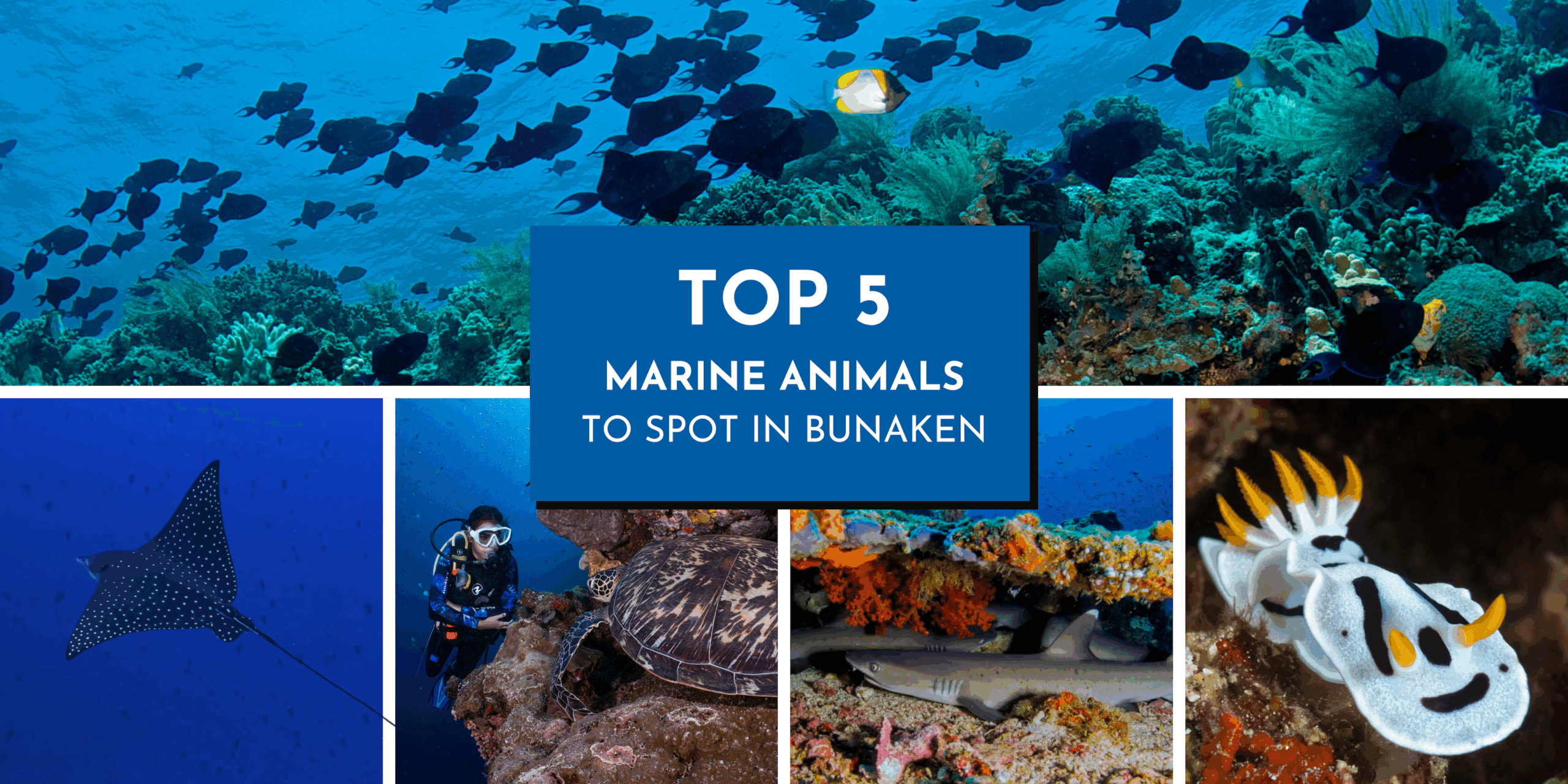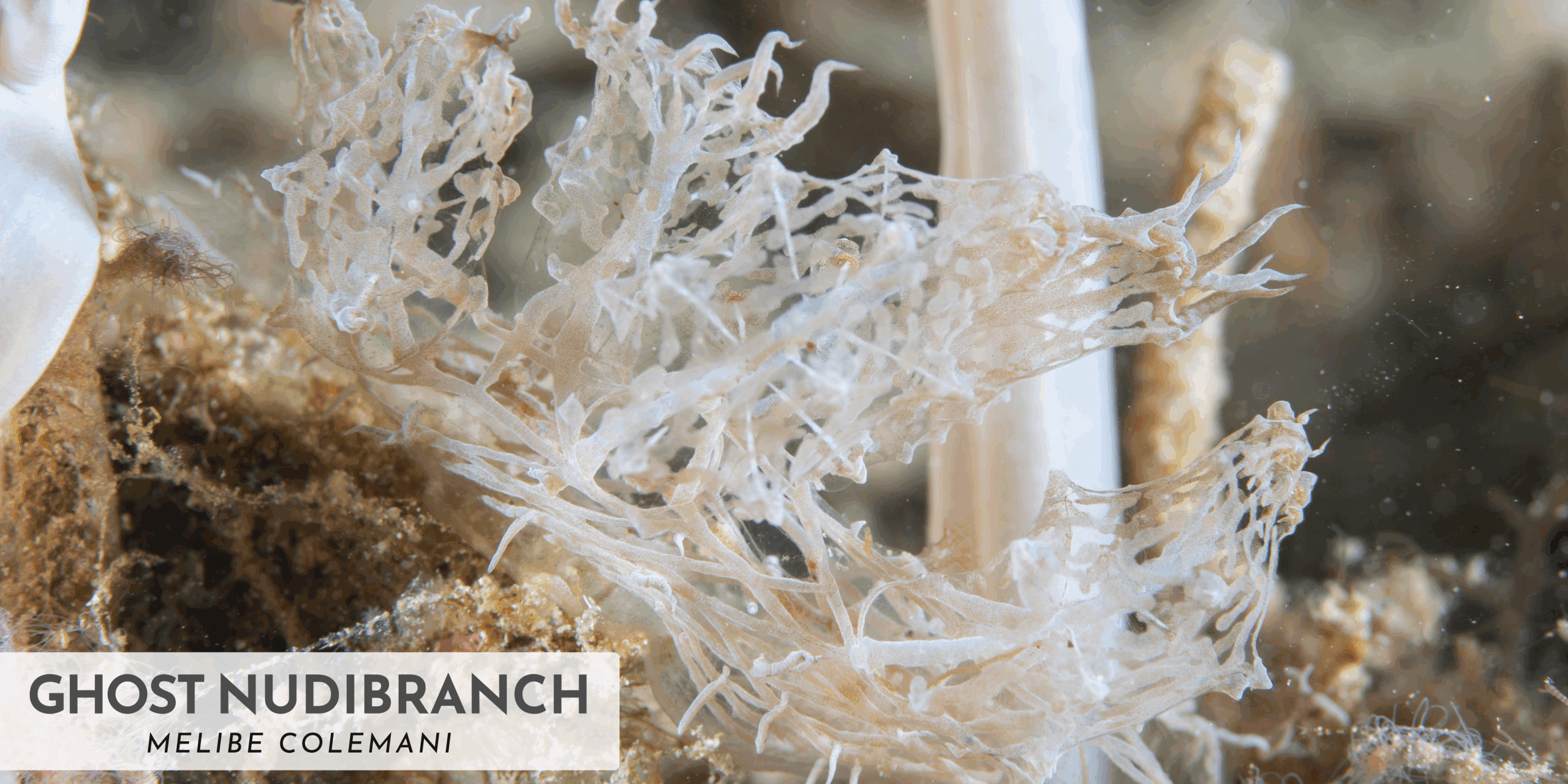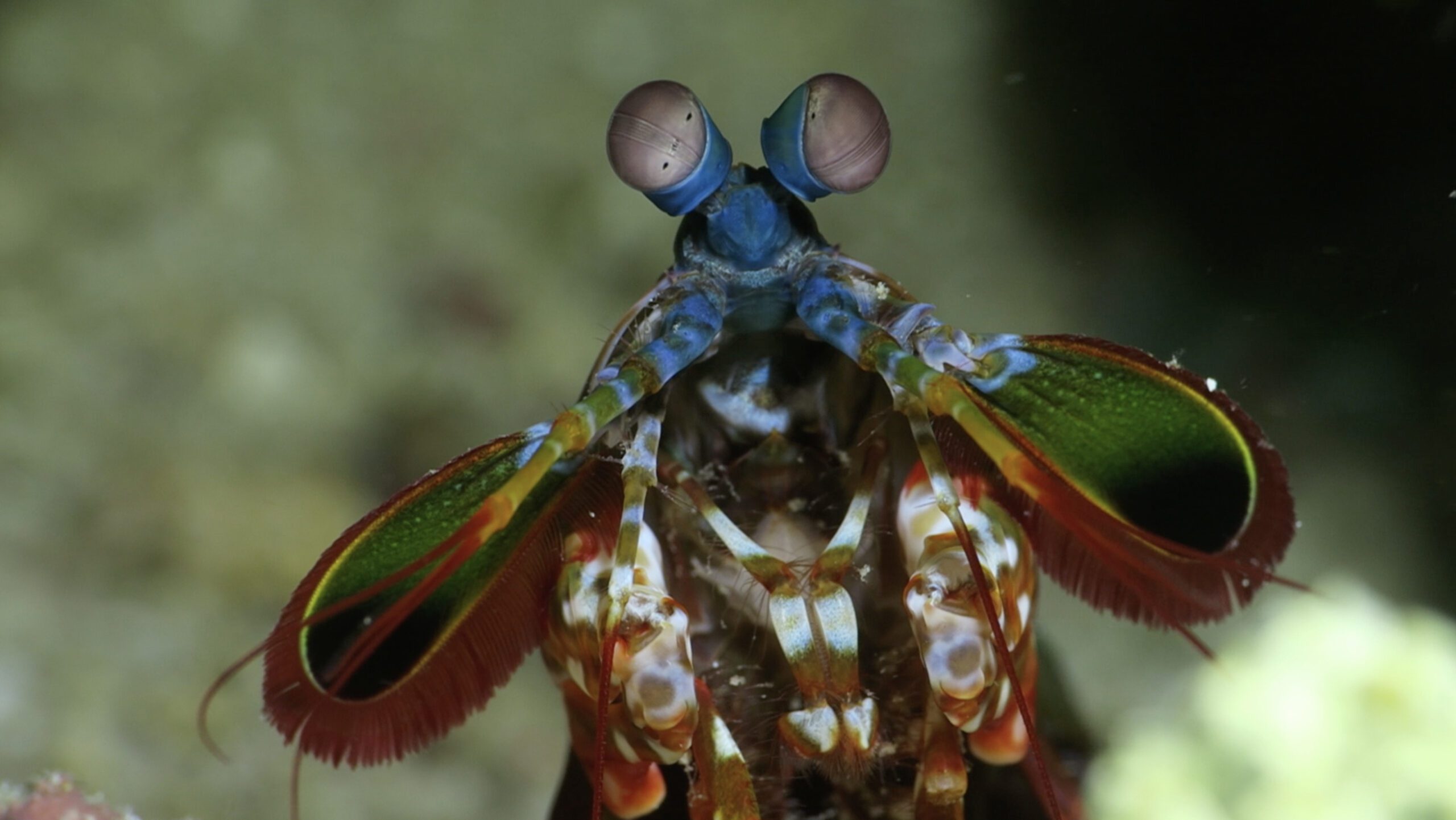
The Mantis Shrimp – A Record Breaking Critter
The Mantis Shrimp (of which there are numerous species) is a small, aggressive marine Crustacean, that can be found at all of our dive sites, including both muck and coral reef sites, around Bunaken, Bangka and Manado Bay.
Mantis Shrimp Species in North Sulawesi
Mantis shrimps may be small, beautiful and boast vibrant colors, but they are also deadly and are able to club prey with the force of a bullet or spike them with lethally sharp claws. There are around an incredible 450 species of mantis shrimp worldwide, and their colors range from shades of brown to bright, green, red and blue.
The most infamous species is the Peacock mantis shrimp (also known as harlequin mantis shrimp, painted mantis shrimp, or clown mantis shrimp), and is one of the larger, more colorful mantis shrimps commonly seen. Here in North Sulawesi, the peacock mantis shrimp (above) is the most commonly spotted species, along with the pink eared mantis and golden mantis.

The golden mantis is one of several mantis shrimp species found in North Sulawesi
Peacock mantis shrimps typically grow to around 10cms (4 inches) in length, but some have been recorded to be as large as 46cms (18 inches). The mantis shrimp’s shell (or ‘carapace’) covers only the rear part of the head and the first four segments of the thorax. While they are relatively common, they are not a particularly well-understood species as they are solitary and territorial sea creatures, spending most of their time hiding in rocks and burrowing in the sea bed.
Mantis shrimp are a violent predator and their diet depends on the species. They typically eat fish, crabs, clams, snails, worms, shrimp and squid. They can also prey on animals much larger than themselves, due to their significant power.
Some mantis shrimp species are monogamous, remaining with the same partner for life. Mantis shrimp pairs will live to together in the same burrow, and both the male and female take care of the eggs. So that’s the basics of mantis shrimps covered – now for the really incredible facts – read on and be prepared to be amazed by this record-breaking critter…
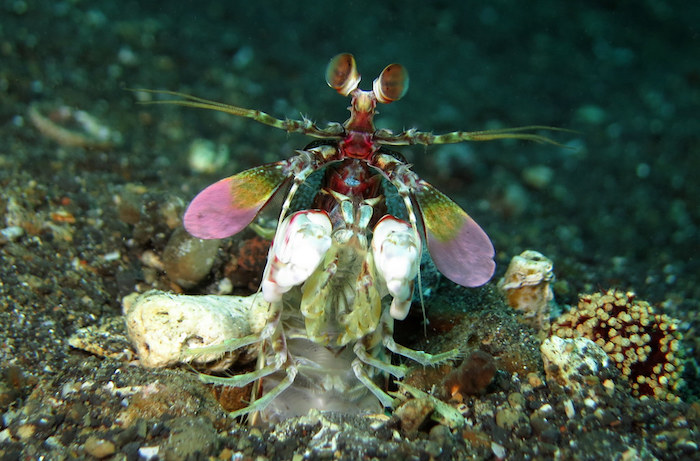
This is the pink-eared mantis shrimp, a spearing variety – also found in North Sulawesi
Mantis Shrimp Facts
‘Spearers’ or ‘Smashers’
All mantis shrimp species can be divided into ‘spearers’ or ‘smashers’, based on the types of claws they have and tactics they use to kill their prey.
Spearers have spiny appendages with barbed tips, that are used to stab soft-bodied prey, such as different types of worms and fish. Smashers have more developed club-like appendages that are used to bludgeon and smash their prey to pieces.
Smashers can punch at the same velocity as a gunshot from a .22 caliber rifle. Smasher mantis shrimp have two raptorial appendages (called ‘dactyl clubs’) on the front of their bodies which they use to strike prey. These fists are able to accelerate from their body at over 50 mph, delivering a force of over 1,500 newtons -that’s 2.5k times the force of the shrimps own weight. If a human could do that they’d be able to punch through steel.
They can throw punch
Their punch is so fast it results in ‘cavitation’ bubbles. This is a superheated bubble and small flash of light, which for split seconds also generates temperatures of 4,400c (which is nearly as hot as the sun) in the surrounding water.
When the bubbles collapse, they cause an intense shockwave which is like a double punch and can stun, dismember or kill prey instantly – even if the mantis shrimp misses the target.

The peacock mantis is a type of smashing mantis shrimp
Have a special shock absorbent core
Beneath their hard-coated clubs, mantis shrimp have special layers of elastic polysaccharide chitin, which are positioned in a way to act as shock absorbers. This structure is called a Bouligand Structure, and it keeps small cracks from becoming a full break. Researchers have even studied their cell structure for advanced body armor for combat troops, car frames and aircraft panels.
Mantis shrimps are older than dinosaurs
Stomatopods began evolving independently from other members of the class Malacostraca nearly 400 million years ago, about 170 million years before dinosaurs.
The name origin
The name Mantis comes from their appearance. All mantis shrimp species have a second pair of prey-catching arms that are greatly enlarged. This second pair of arms are shaped like the large grasping forelimbs of the praying mantis insect.
Eyes movement and function
The eyes of the mantis shrimp are located on the long stalks that can move independently. Each eye has ‘trinocular vision’, which means it can gauge depth and distance on its own by focusing on objects with three separate regions.
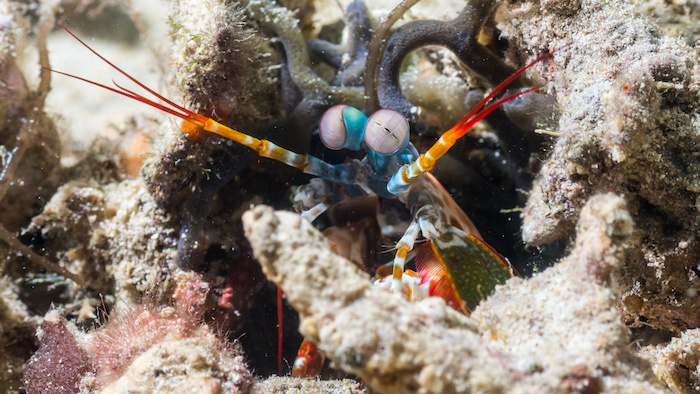
Mantis shrimps’ eye are on stalks and can be moved independently
Mantis shrimps have the most complex eyes in the animal kingdom and have the most complex visual system ever discovered. They can see a special spiraling type of light called circularly polarised light that’s not been documented in any other animal. They also have a structure in their eyes that’s similar to technology found in DVD players, only much more advanced.
Many color photoreceptors
The mantis shrimp has 12-16 different color photoreceptors for color analysis in their retinas. This is three times as many photoreceptors as humans have. While they have significantly more color photoreceptors, research suggests they are actually worse at differentiating color than humans. However, scientists believe this is because their eyes are operating at a different level, functioning more like a satellite. It’s believed mantis shrimp can take all visual information into their brains immediately without having to process it, allowing them to react instantly to the environment.
Mantis shrimps reproduction
Mantis shrimps carry their eggs with them while they are maturing to hatch. Check out the video below of a peacock mantis shrimps with eggs on Murex Manado House Reef…
Passport to Paradise
How many of these mantis shrimp facts did you already know? We hope we have excited you about seeing these incredible and record-breaking critters underwater with us! Why not enhance your time in Indonesia and visit three phenomenal North Sulawesi diving destinations in one trip?
Discover three of North Sulawesi’s most notable diving areas with a Passport to Paradise: Bunaken (including Manado Bay) -> Bangka -> Lembeh. Discover epic walls and wide-angle in the Bunaken Marine Park, kaleidoscopic reefs surrounding Bangka Island and the world’s most famous muck diving and Luxury Resort in the Lembeh Strait. With seamless boat diving transfers from resort to resort there’s no wasted transfer days and no gear drying or packing – just dive your way around North Sulawesi!
For more information, or to make a reservation please contact us at: reservation@murexresorts.com and one of our team will get right back to you. We look forward to welcoming you to North Sulawesi and to Murex Resorts soon!


